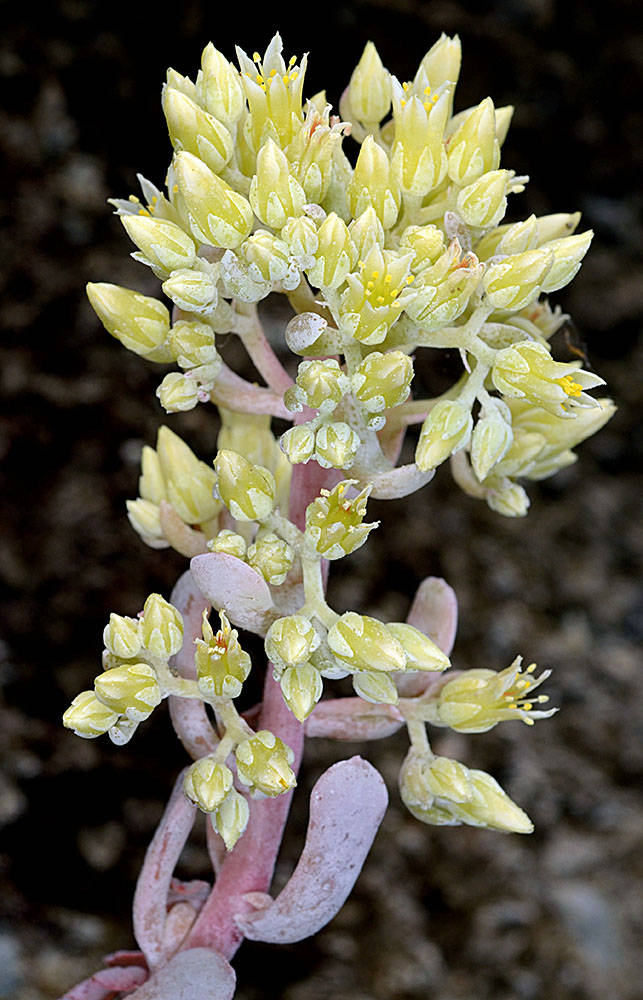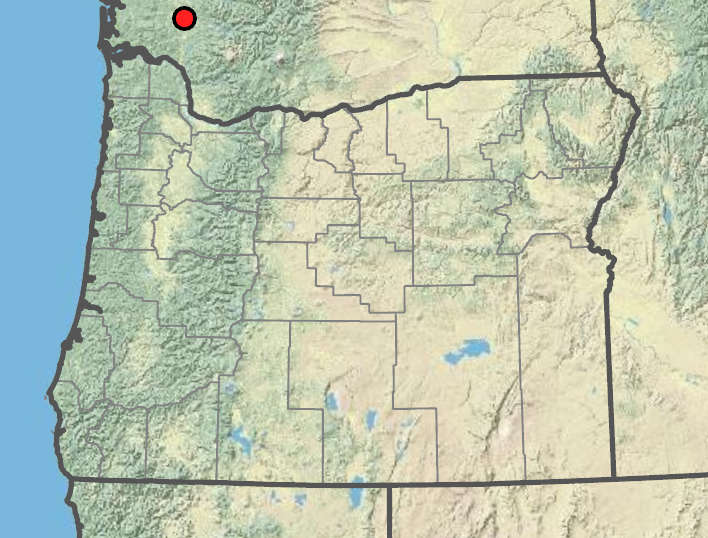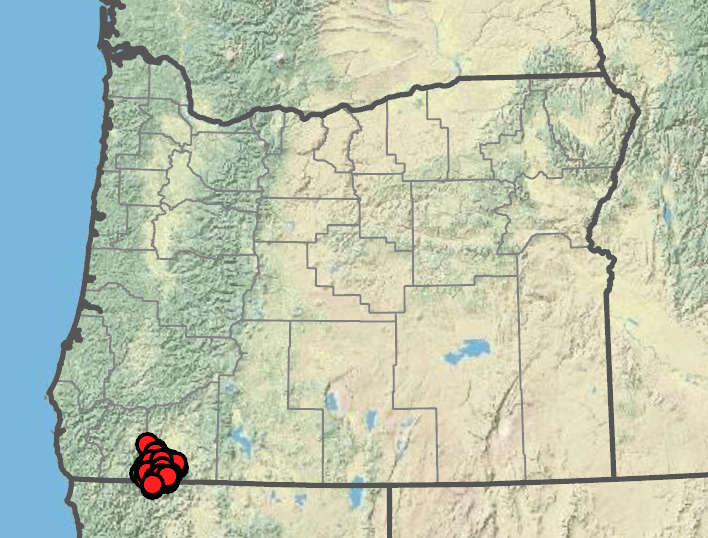Sedum acre
Sedum oblanceolatum
wall-pepper
oblongleaf stonecrop
erect, branched from base, bearing dense rosettes with hidden internodes.
10–22 cm;
stem leaves ascending to somewhat spreading, alternate, narrowly oblanceolate, 15–30 × 3–10 mm, 2.2–5 × as long as wide; broadest above middle, bases not auriculate;
surfaces strongly glaucous.
rosette leaves narrowly oblanceolate, 9–55 × 5–10 mm, 2.5–8 × as long as wide, with thick layer of granular white wax.
panicle-like cymes, 2.5–8.5 cm, with thick layer of granular white wax, 3–5-branched.
calyx lobes 4–8 mm; (30)40(80)% as long as petals, with thick layer of granular white wax;
tips acute;
petals ascending, 9–14 mm, white, sometimes apparently yellow due to color of anthers;
tips acute to attenuate;
anthers yellow.
erect, fused to slightly above base.
Sedum acre
Sedum oblanceolatum
Rock outcrops, rocky slopes. Flowering May–Jul. 400–1800 m. Sisk. CA. Native.
Sedum oblanceolatum can be recognized by its narrow rosette and stem leaves. The dense, almost granular, waxy coating on the young leaves, panicle branches, and sepals imparts a waxy residue when handled. The distinctive glaucous coating wears off gradually as the season progresses. It also melts off in a plant press or microwave.
Barbara Wilson, Richard Brainerd, Nick Otting
- Local floras:
BC,
OR,
WA
- Local Web sites:
Flora NW,
PNW Herbaria
WildflowerSearch
iNaturalist (observations)
USDA Plants Database
- LBJ Wildflower Center
- SEINet
- Plants of the World Online
- Encyclopedia of Life
- Wikipedia
- Google Image Search





